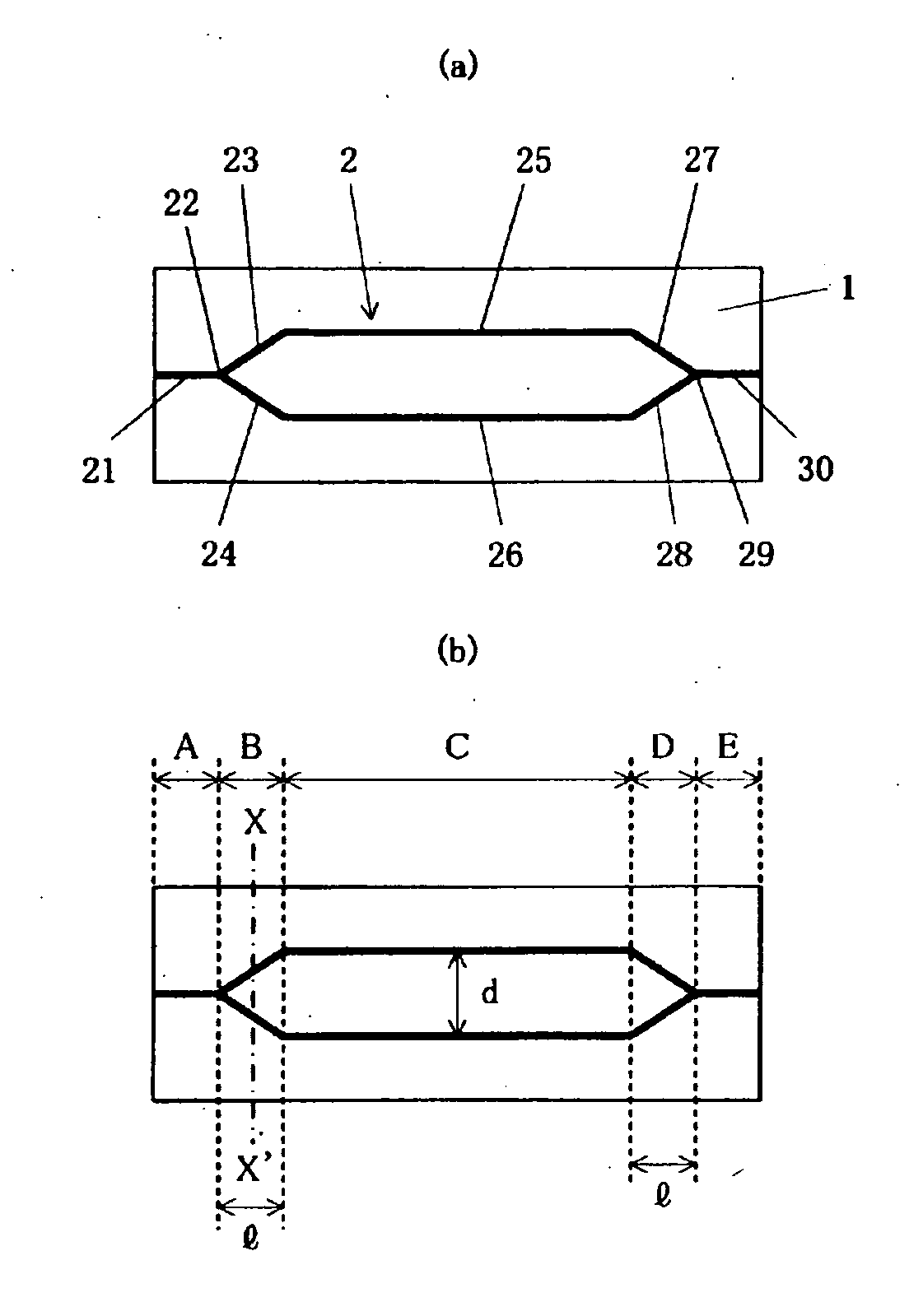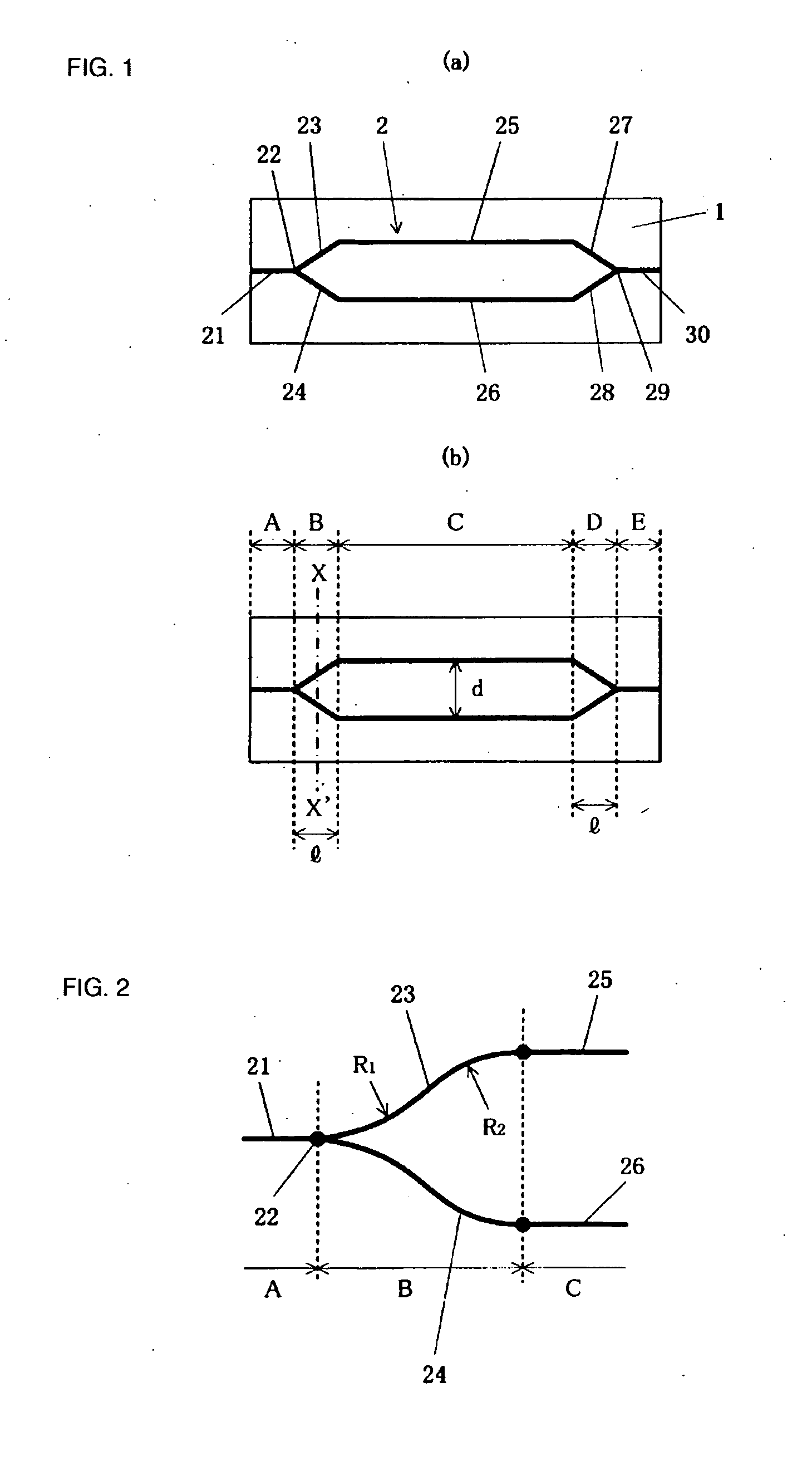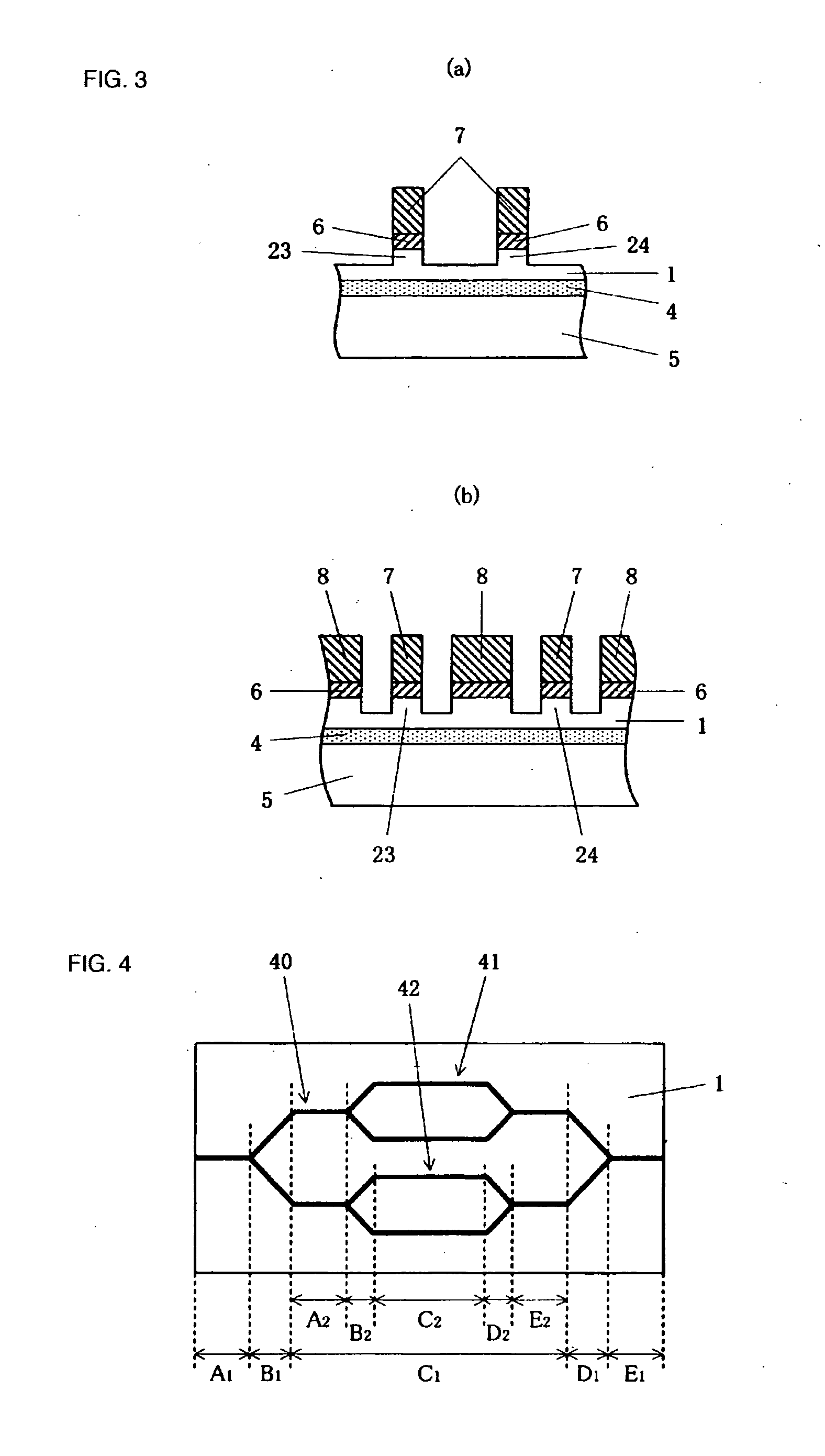Mach-zehnder waveguide type optical modulator
a waveguide and optical modulator technology, applied in non-linear optics, instruments, optics, etc., can solve problems such as a variation in bias point, a decrease in extinction ratio, and a decrease in optical loss, so as to reduce the extinction ratio, suppress the optical loss, and shorten the part of the optical waveguide
- Summary
- Abstract
- Description
- Claims
- Application Information
AI Technical Summary
Benefits of technology
Problems solved by technology
Method used
Image
Examples
example 1
[0072]In an optical modulator according to Example 1, an X-cut LN substrate with a thickness of 500 μm is used as a substrate and an optical waveguide is formed on the surface of the substrate using a Ti diffusion process. The shape of the Mach-Zehnder optical waveguide shown in FIG. 1 is employed as the shape of the optical waveguide. The lengths of the input optical waveguide 21 and the output optical waveguide 30 are about 5 mm, the lengths l of the input branching portion (region B) and the output merging portion (region D) along the symmetry axis are about 3 mm, the length of the parallel portion (region C) is 30 mm, and the gap d between the branched waveguides in the parallel portion is 30 μm. The minimum radius of curvature R in regions B and D is set to 100 mm.
[0073]Then, the rear surface of the substrate is ground until the thickness of the substrate becomes 10 μm, and is bonded to a reinforcement plate using a UV-curable adhesive as an adhesive layer. The modulation elect...
examples 2 to 4
[0074]In Examples 2 to 4, a Mach-Zehnder waveguide type optical modulator is formed in the same way as Example 1 except that the length l, the gap d between the branched waveguides, and the minimum radius of curvature R in Example 1 are changed as shown in Table 1.
example 5
[0075]In an optical modulator according to Example 5, a Z-cut LN substrate with a thickness of 500 μm is used as a substrate and an optical waveguide is formed on the surface of the substrate using a Ti diffusion process. Then, the rear surface of the substrate is ground by the use of a grinder until the thickness of the substrate becomes 5 μm, and is bonded to a reinforcement plate using a UV-curable adhesive as an adhesive layer. The shape of the Mach-Zehnder optical waveguide shown in FIG. 1 is employed as the shape of the optical waveguide. The lengths of the input optical waveguide 21 and the output optical waveguide 30 are about 4 mm, the lengths l of the input branching portion (region B) and the output merging portion (region D) along the symmetry axis are about 0.825 mm, the length of the parallel portion (region C) is 35 mm, the gap d between the branched waveguides in the parallel portion is 25 μm, and the minimum radius of curvature R is 0.2 mm. The optical waveguides of...
PUM
| Property | Measurement | Unit |
|---|---|---|
| thickness | aaaaa | aaaaa |
| thickness | aaaaa | aaaaa |
| thickness | aaaaa | aaaaa |
Abstract
Description
Claims
Application Information
 Login to View More
Login to View More - R&D
- Intellectual Property
- Life Sciences
- Materials
- Tech Scout
- Unparalleled Data Quality
- Higher Quality Content
- 60% Fewer Hallucinations
Browse by: Latest US Patents, China's latest patents, Technical Efficacy Thesaurus, Application Domain, Technology Topic, Popular Technical Reports.
© 2025 PatSnap. All rights reserved.Legal|Privacy policy|Modern Slavery Act Transparency Statement|Sitemap|About US| Contact US: help@patsnap.com



